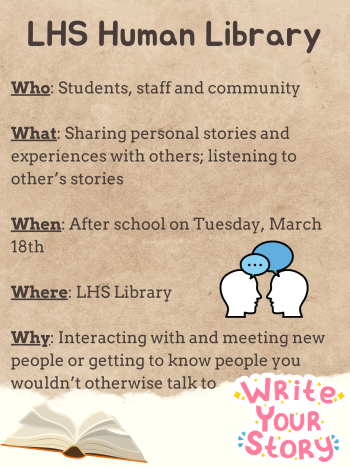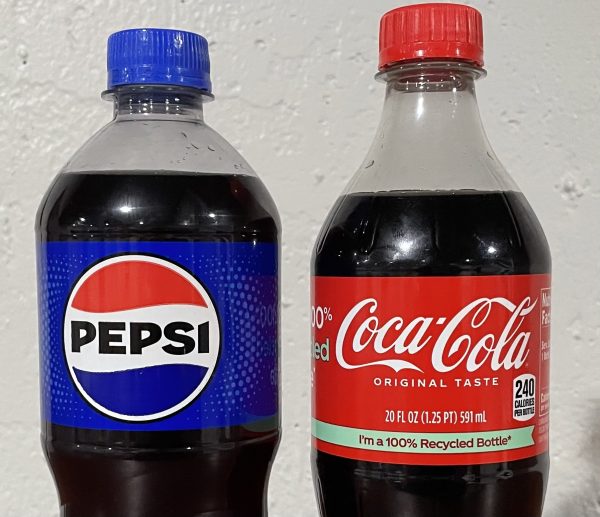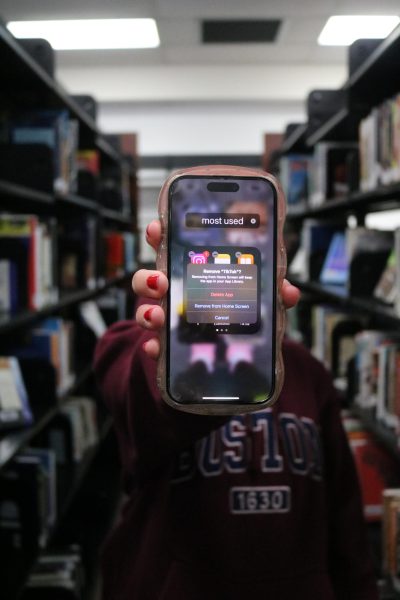Cafeteria to serve more gluten-free items
New gluten free options at school are slowly being introduced to the cafeteria and will help to improve the variety of foods we offer at LHS.
Some students at LHS have celiac disease, a gluten intolerance or a gluten-free diet. While the school’s cafeteria does have gluten-free options, many students are unaware of their existence.
Libertyville High School’s principal, Dr. Tom Koulentes, helped expand gluten-free food items in the cafeteria at Highland Park High School (HPHS), the school where he formerly was principal. A student from HPHS met with him to discuss the lack of gluten-free items. Dr. Koulentes said the student “identified some gluten-free food items that the cafeteria director agreed to purchase and to sell in [their] cafeteria.”
HPHS did have some gluten-free items before that student got involved; however, according to Dr. Koulentes, “the student didn’t feel they were healthiest or the best variety. She helped identify more gluten-free items that she and the cafeteria director felt were higher in nutrition value and better quality for students.”
Now, at Libertyville High School, the cafeteria director, Mr. Daniel Lyon, is working to expand the selection of gluten-free items in the cafeteria. Currently, there are minimal options available to students with a gluten-free diet and some choose to bring their food from home due to the lack of options.
Currently, students can purchase several items from the salad bar; deli meats, such as turkey, ham, and salami; as well as cheeses, vegetables, and fruits. The cafeteria also serves gluten-free bread and offers lettuce wraps.
For students in need of these options, there is a website and app for phones available to search the cafeteria’s menu for gluten-free items, known as Nutrislice. Students can view the school’s menu online and filter out all foods that contain wheat.
Mr. Lyon, in regards to the Nutrislice program, said that “there’s no wheat in any of [the food that is shown on the Nutrislice website after the wheat allergen was filtered out]. It’s all vegetables.”
Annika Bjorklund, a student at LHS with a gluten intolerance, said that she doesn’t “eat in the cafeteria because [she prefers] just not to worry about [eating] something [she’s] allergic to.” She believes that she could probably eat in the cafeteria if she wanted to but just doesn’t want to take that chance. Because Bjorklund is “also a vegetarian, [so] there’s a lot of things [she doesn’t] eat.”
At HPHS, posters advertised the gluten-free options in the cafeteria, and it became quite popular, according to Dr. Koulentes. Even if LHS students aren’t gluten intolerant and simply would like to purchase gluten-free foods, Dr. Koulentes said that he wants “to make gluten-free options available to all students who want them.”
Maya Ben-Dror is the HPHS student who advocated to start the gluten-free meal options in the cafeteria. Via a phone interview, she said she “knew that [HPHS] didn’t offer very many gluten-free options because whenever [she] would be hungry after eating [her] lunch, [she] would go down to the cafeteria to buy something and [her] only option pretty much was a chocolate bar or yogurt, but there was never anything like substantial meals.”
Ben-Dror talked to other students at her school who she knew had celiac disease or a gluten intolerance, and they told her that they would eat the food if the cafeteria provided it.
Now, the gluten-free menu is far more extensive than it previously was at HPHS.
“They’ve got a Mexican casserole and other stuff. They’ve got [a] broccoli and cheddar bakeable, black bean tamales, mac and cheese, enchiladas, breakfast scramble,” Ben-Dror said. These items all come from Amy’s Kitchen, a company that creates gluten-free products.
Ben-Dror believes serving gluten-free items in a cafeteria to be “really important actually because one in a hundred of the population has celiac disease and that’s a really, really big percentage when you think about it. And then you have the people with restrictive diets.”




![Mr. Abullh Ali, manager/assistant, helps open Queen Yemeni Coffee in downtown Libertyville at 606 North Milwaukee Ave. With the help of employees such as manager and LHS senior Yousef Taha, they are able to bring the Yemeni and Ethiopian culture to Libertyville by using their Queen spices, cinnamon and cardamom in their drinks such as Adani Chai, which is inspired by Sheda, the Queen of Yemen and Ethiopia. “The history of our coffee [is] a long history and we believe that Yemen and Ethiopia started the coffee and we are bringing something unique to the community,” Mr. Ali said.](https://www.lhsdoi.com/wp-content/uploads/2025/04/Photo-1-600x400.jpg)



